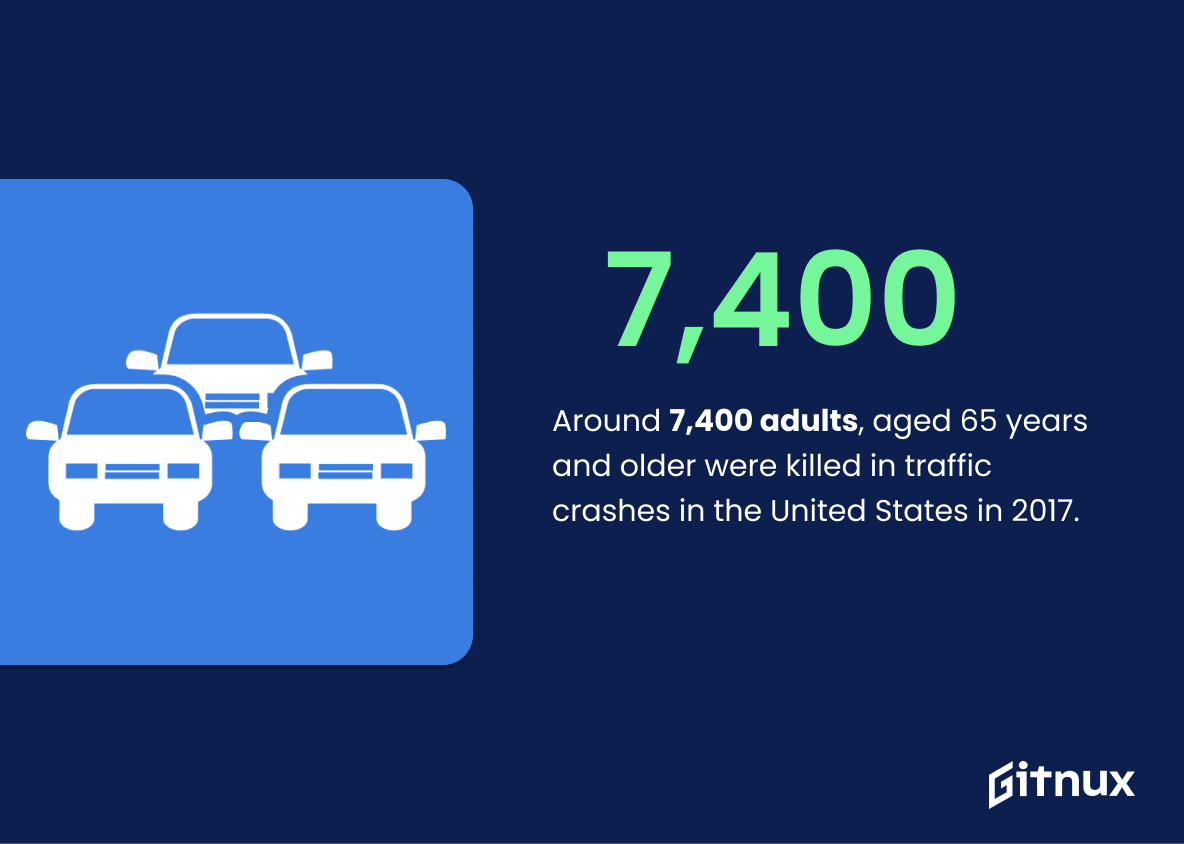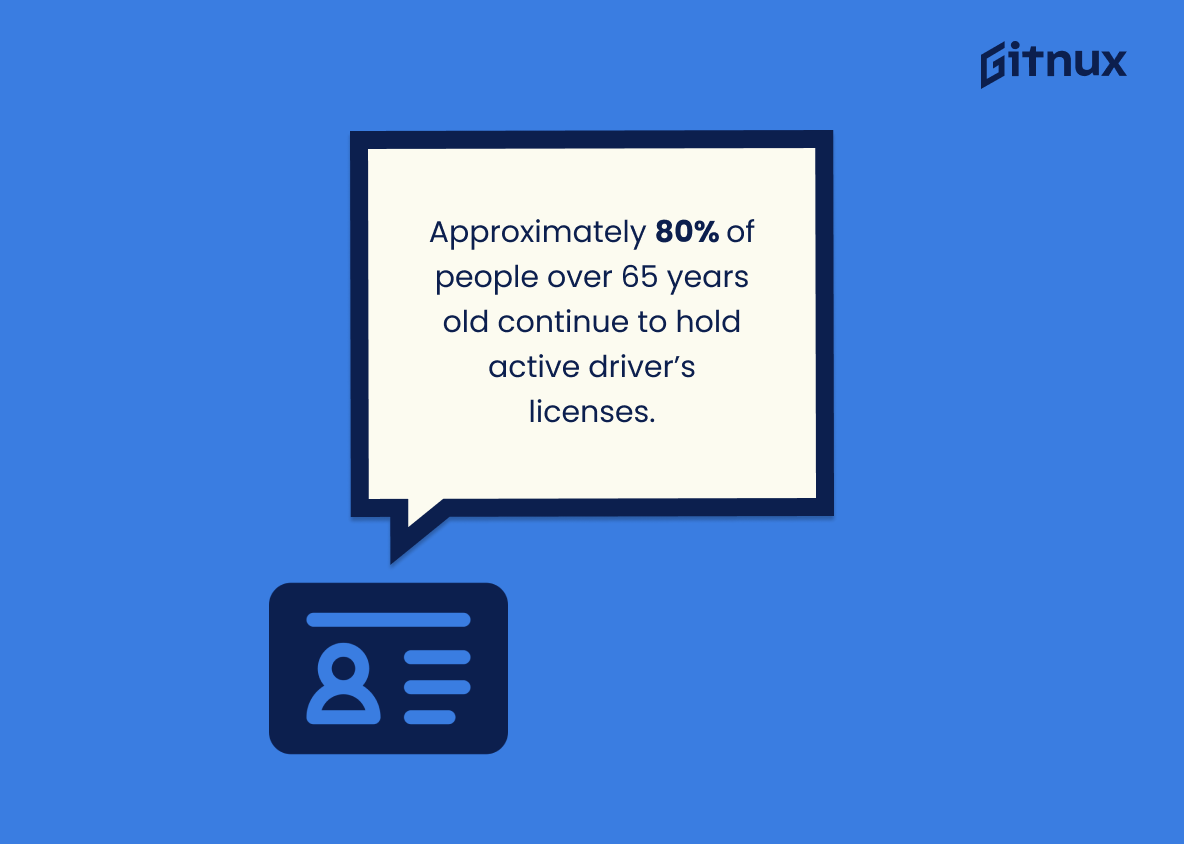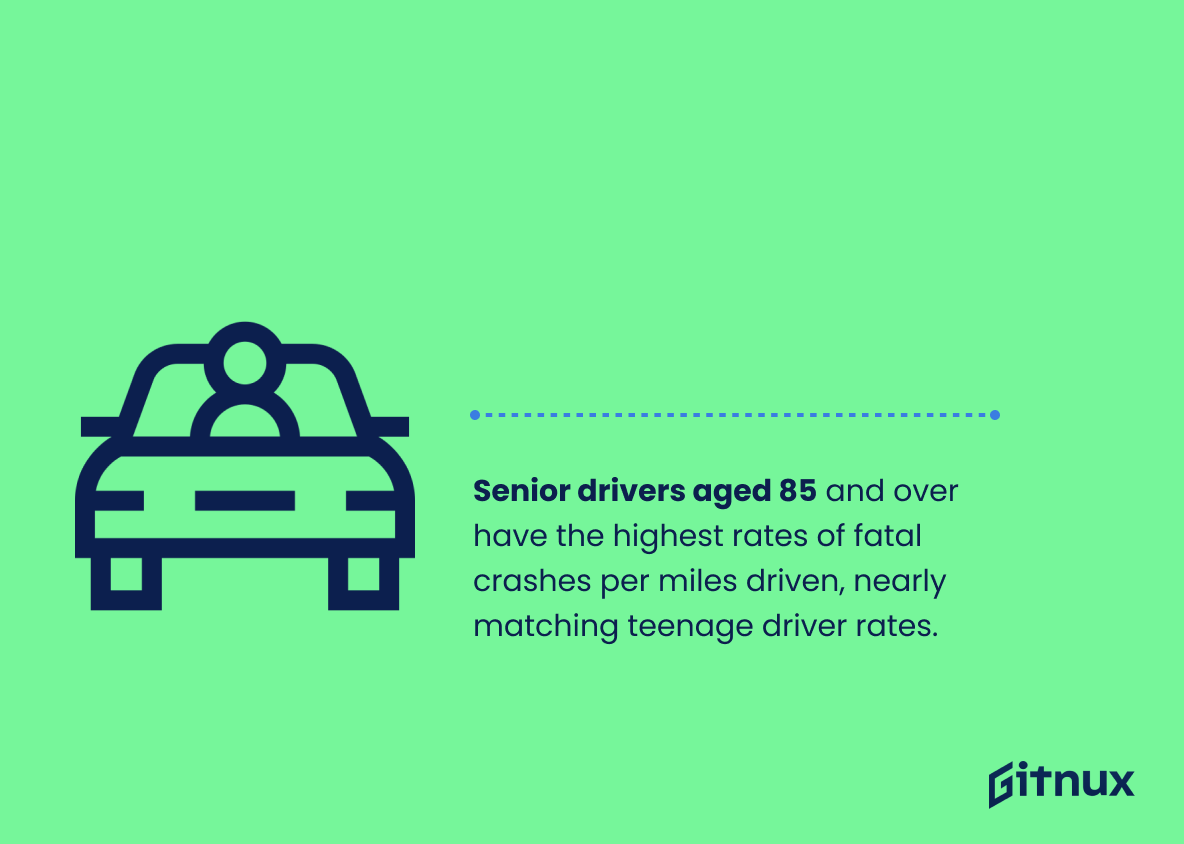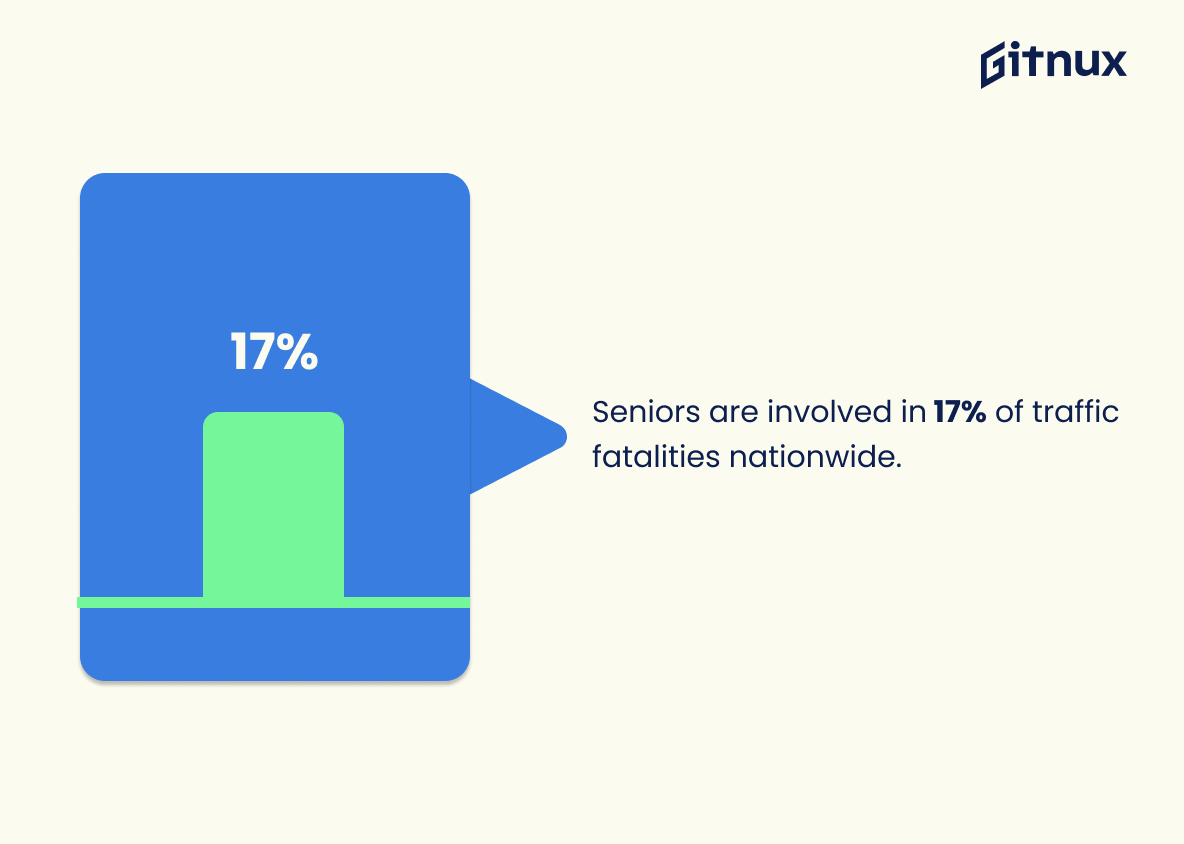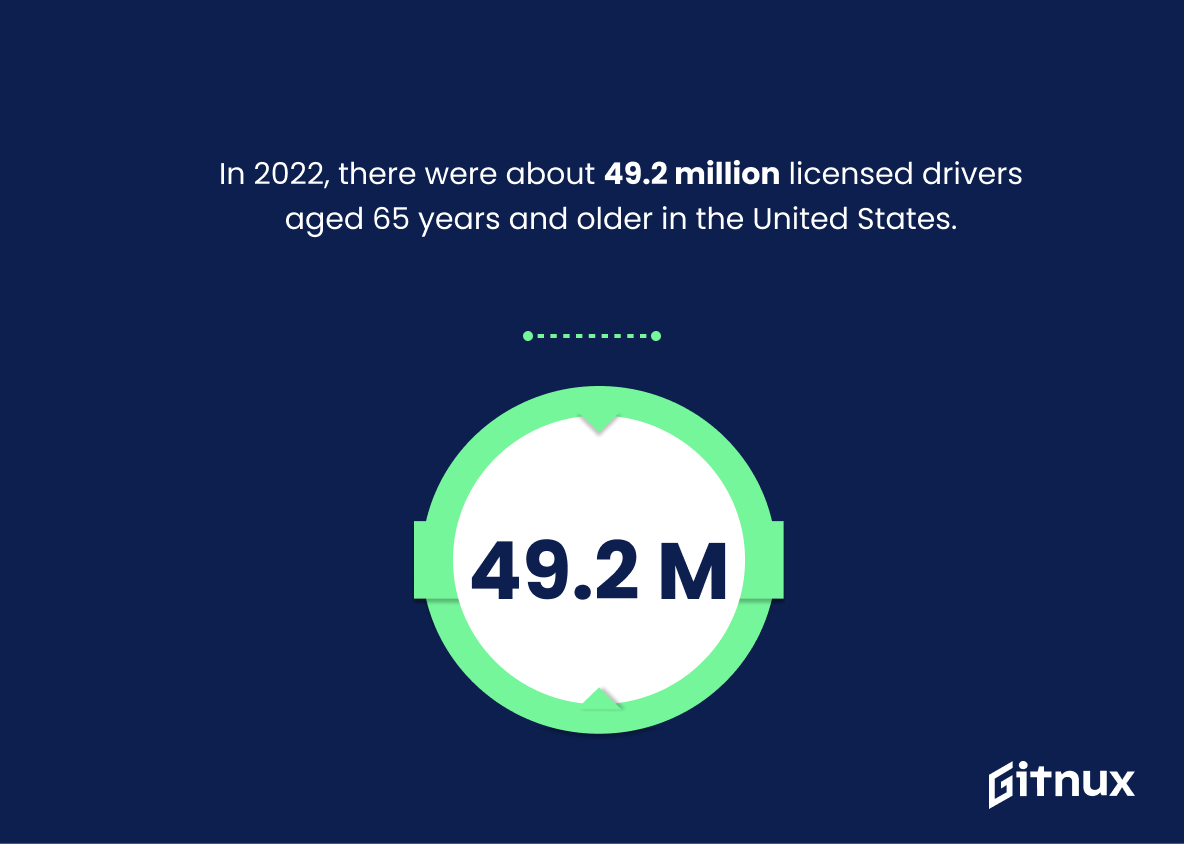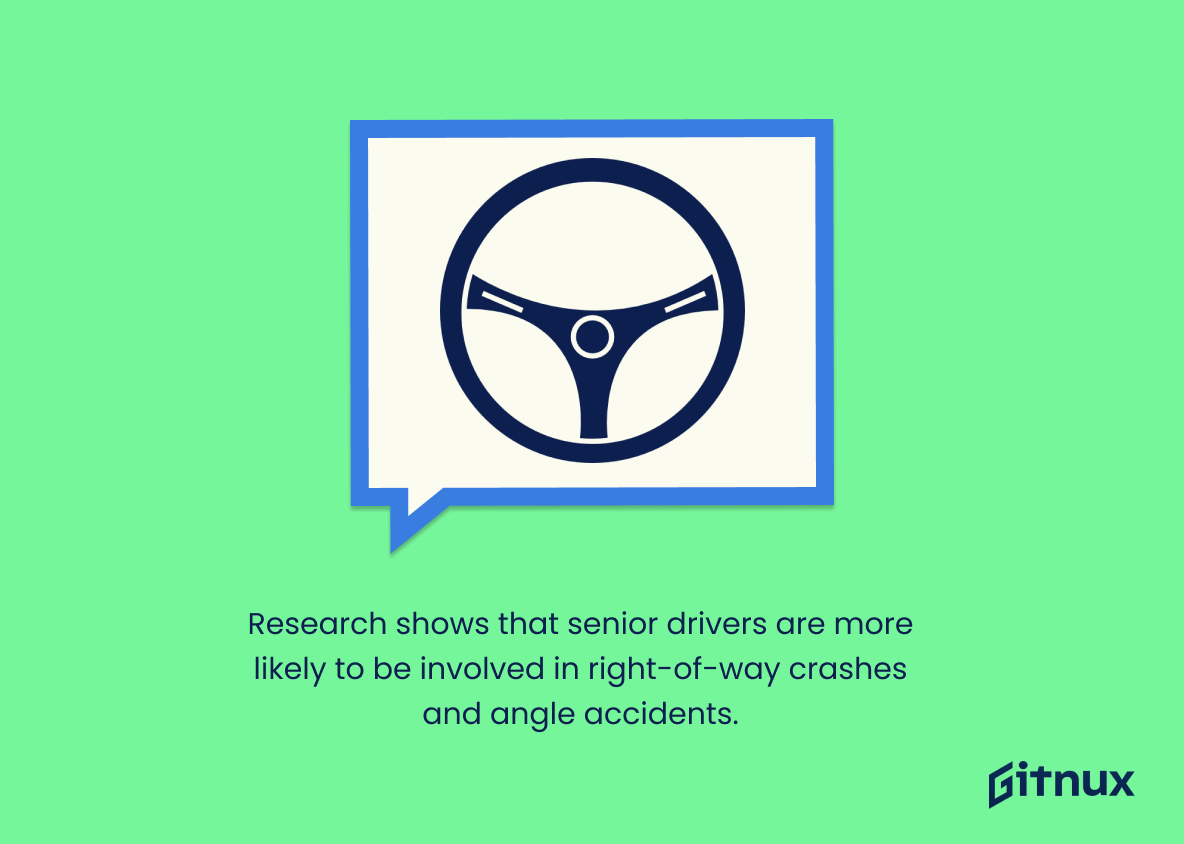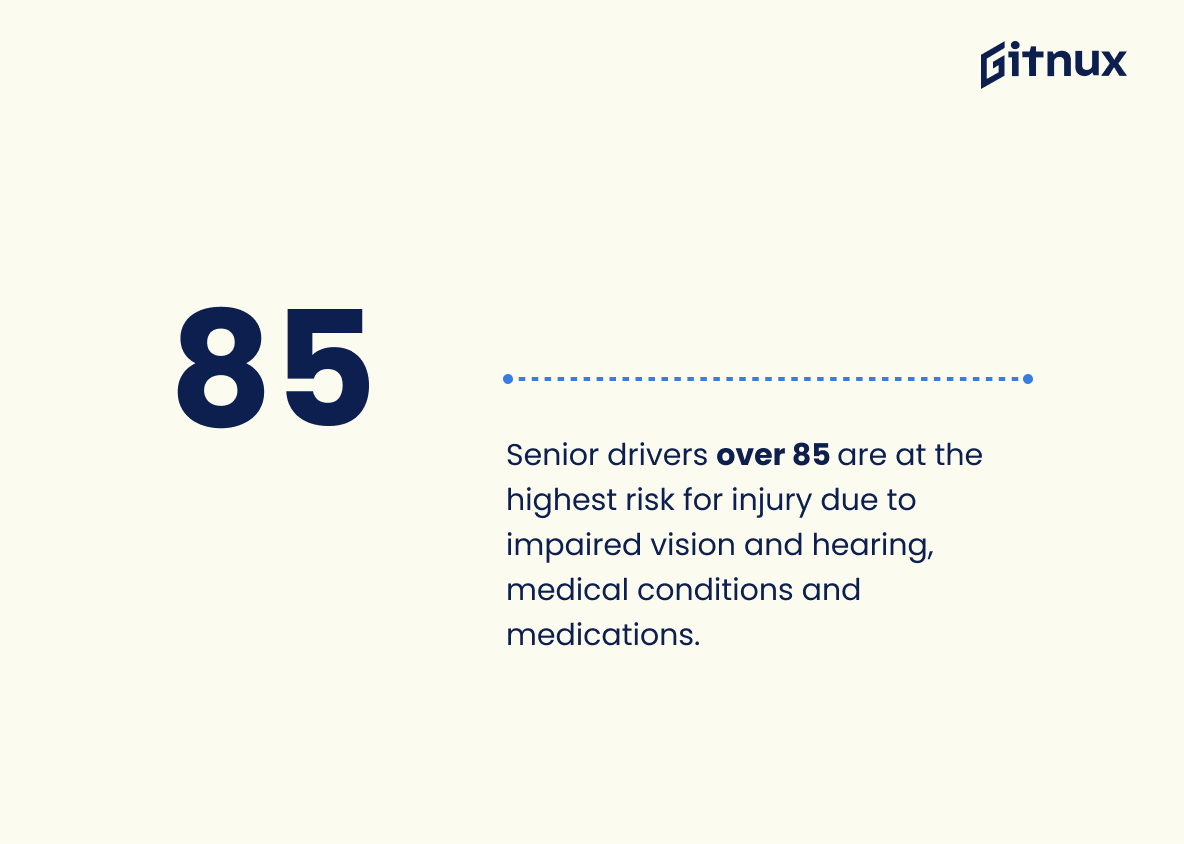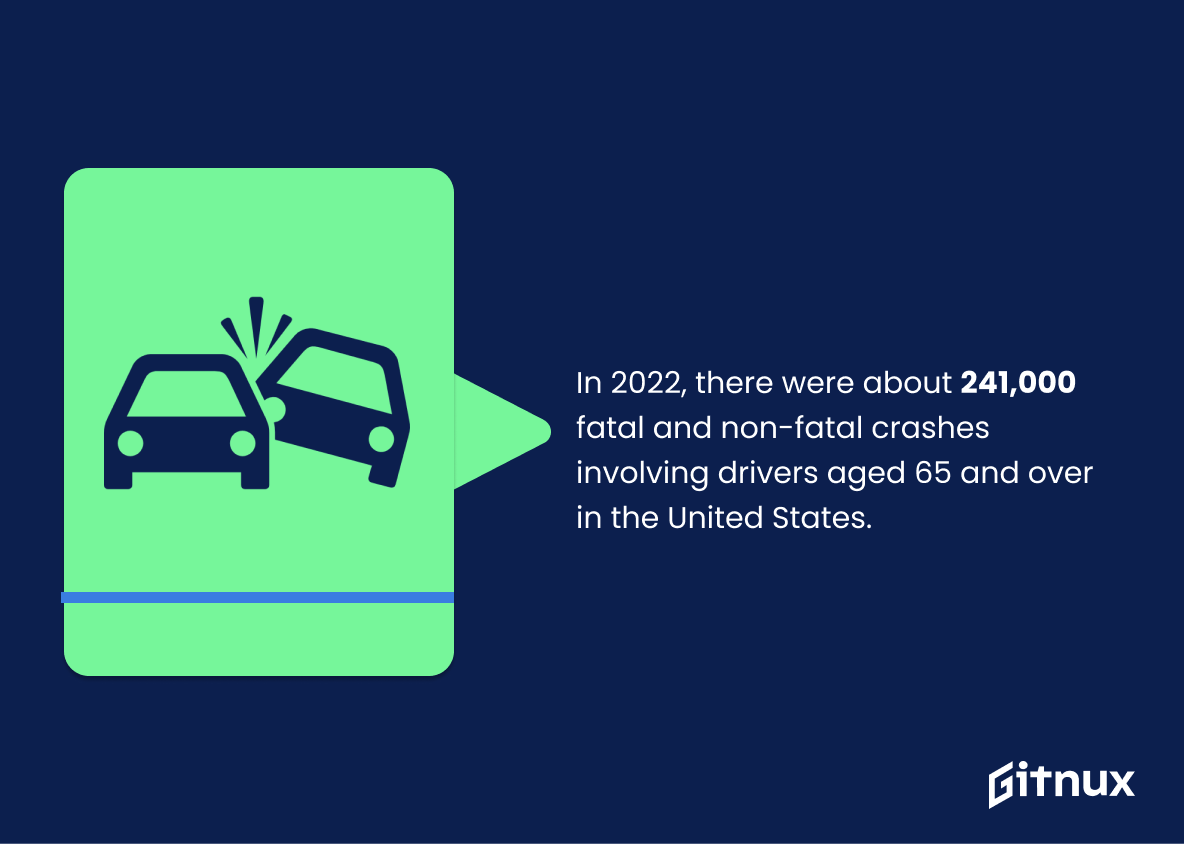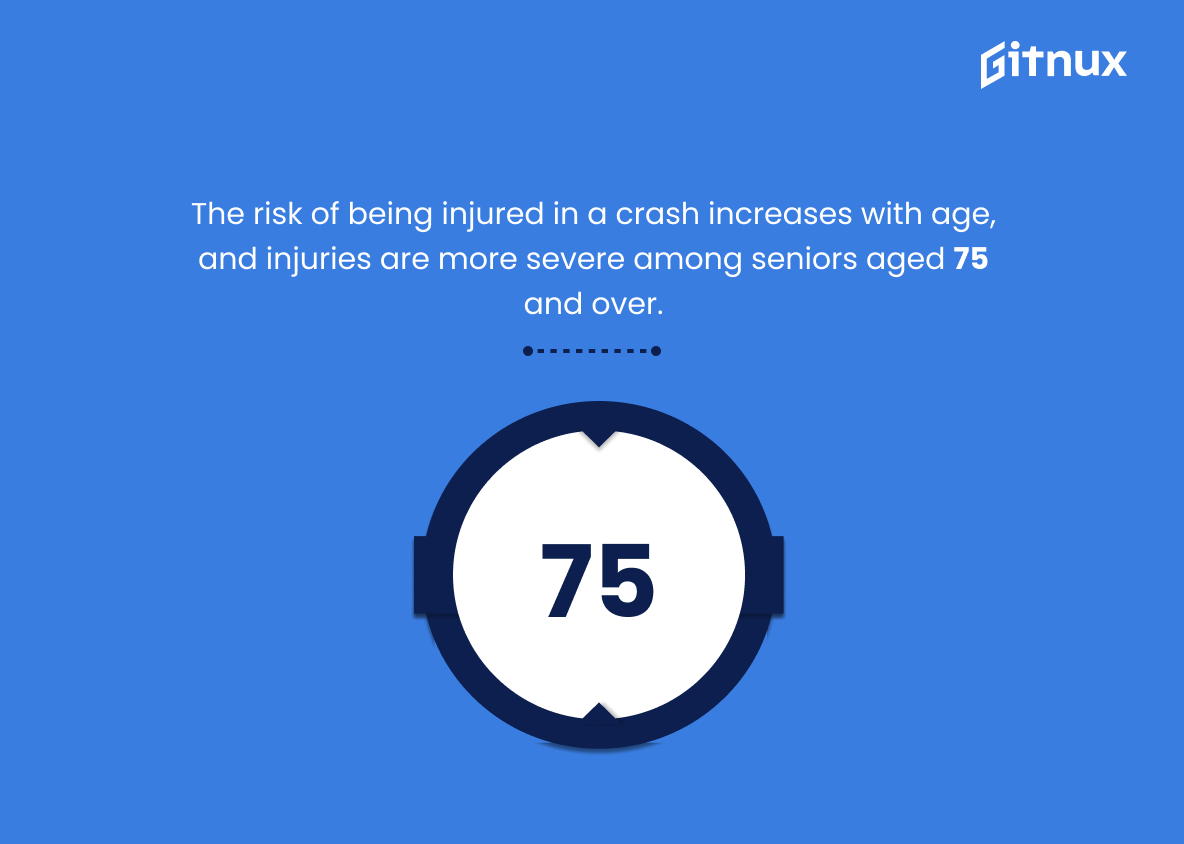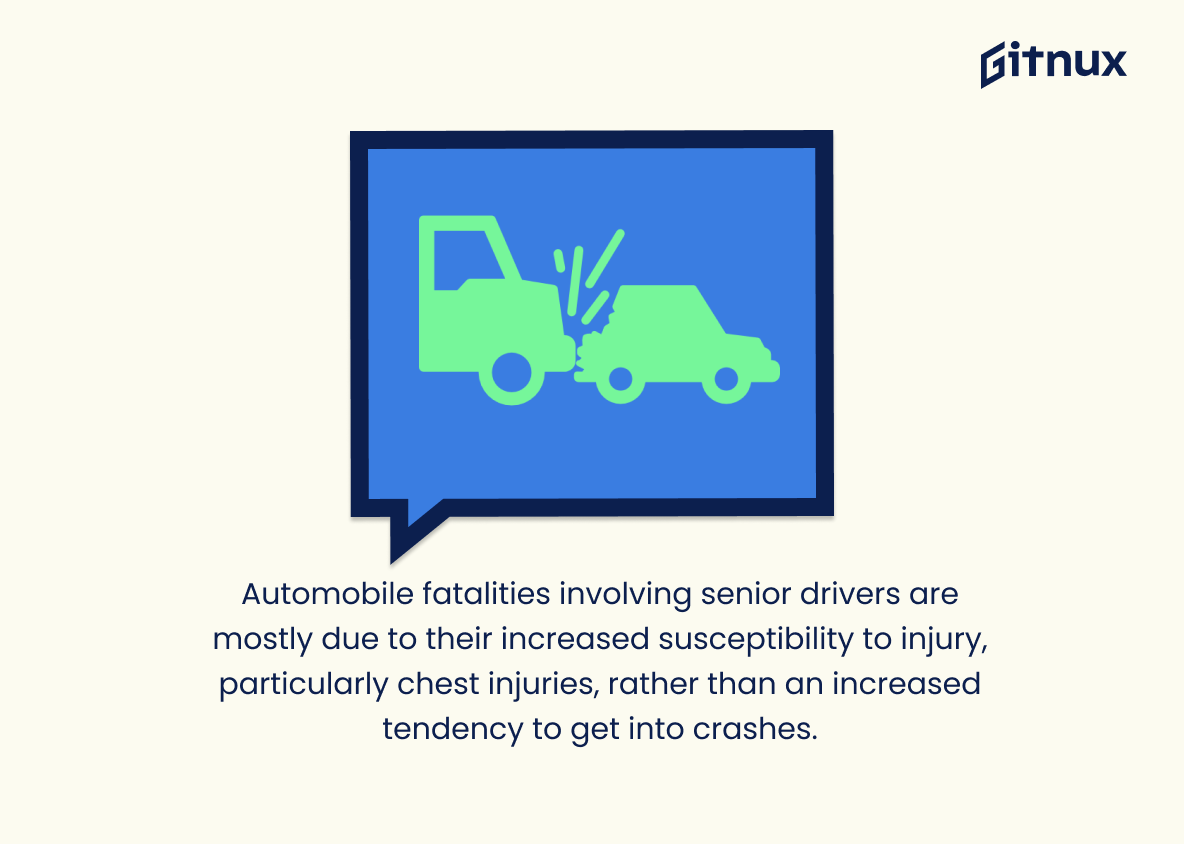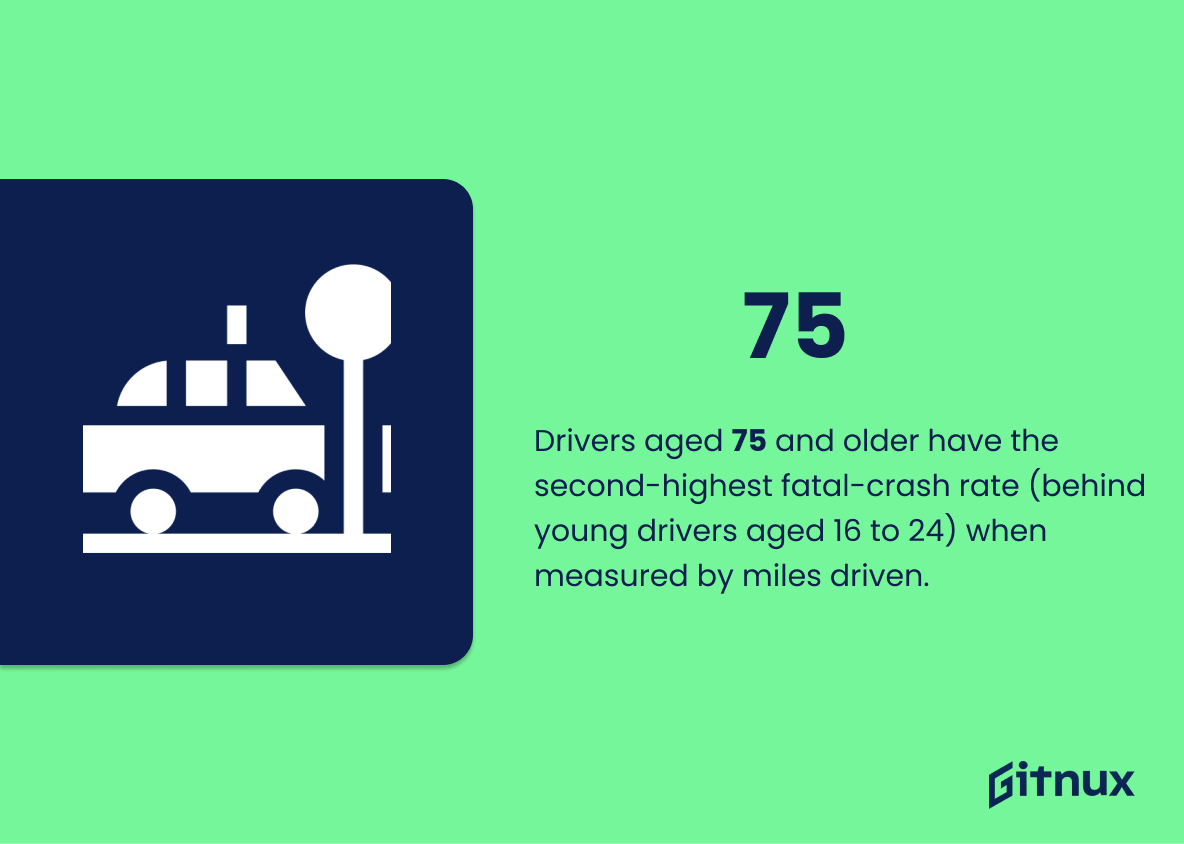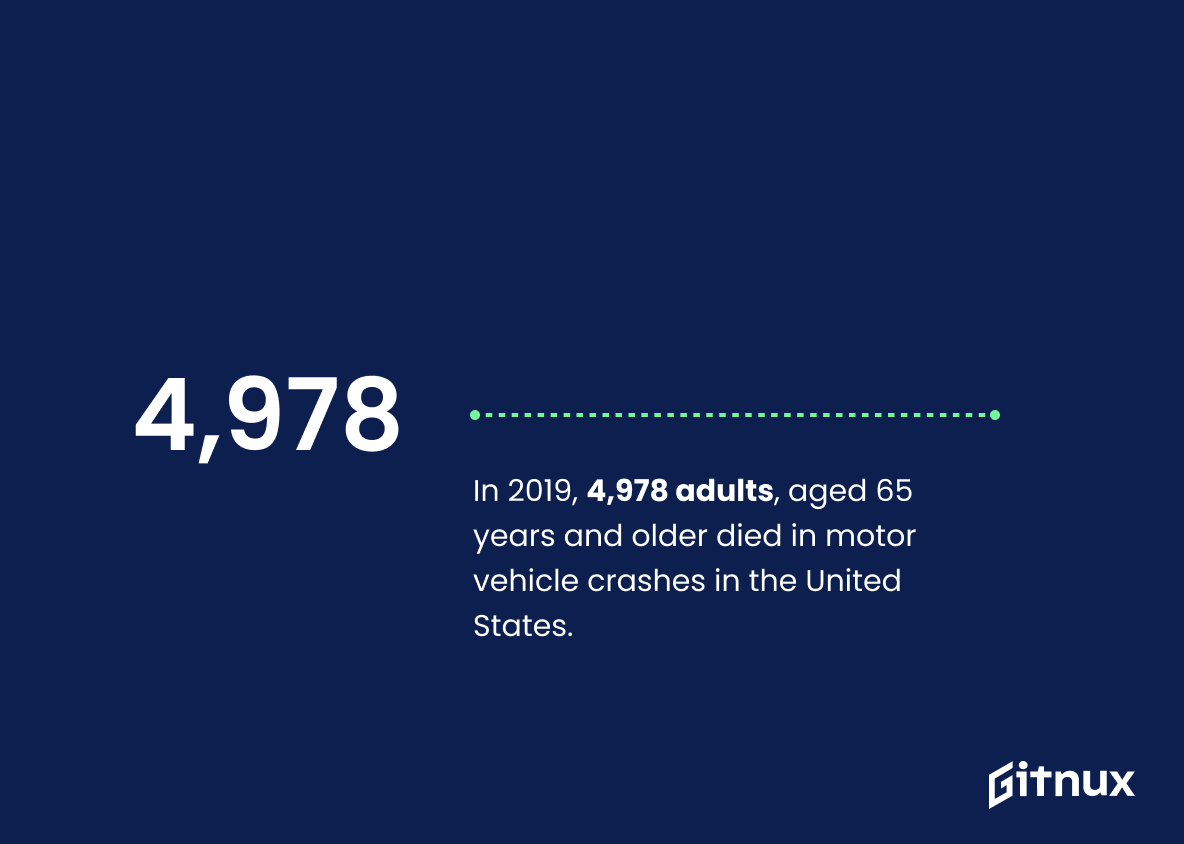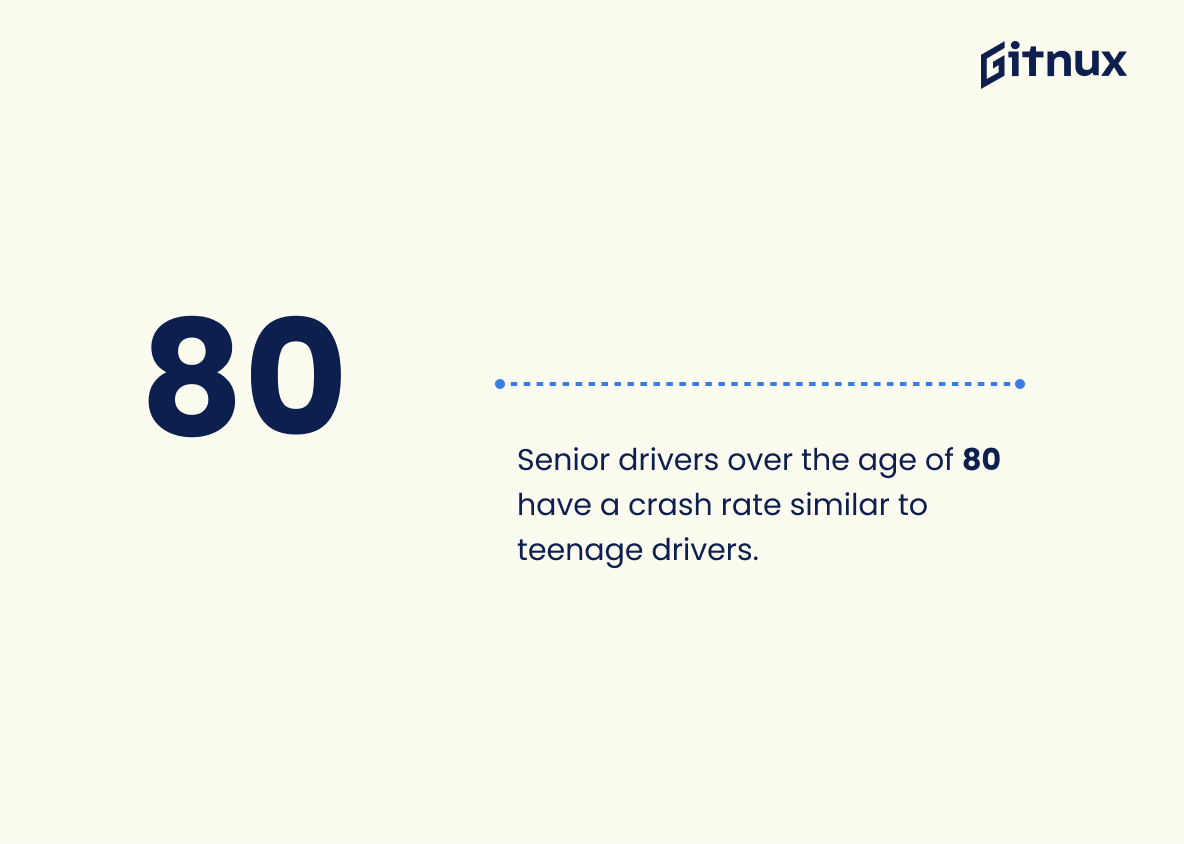As the population of senior citizens continues to grow, it is important to understand their driving habits and safety statistics. This blog post will explore 20 different facts about senior citizen drivers in the United States. From fatal crash rates per miles driven, seatbelt usage, and vision impairment – this article will provide an overview of how seniors are affected on our roads today.
This statistic is a stark reminder of the dangers that senior citizens face when they take to the roads. It highlights the need for increased safety measures to protect elderly drivers and pedestrians, as well as the need for greater awareness of the risks associated with driving at an advanced age.
Approximately 80% of people over 65 years old continue to hold active driver’s licenses.
This statistic is a testament to the fact that the majority of seniors are still able to safely operate a vehicle. It speaks to the importance of maintaining independence and mobility for those in their later years, and highlights the need for continued access to transportation for seniors.
Senior Citizens Driving Statistics Overview
Senior drivers aged 85 and over have the highest rates of fatal crashes per miles driven, nearly matching teenage driver rates.
This statistic serves as a stark reminder of the dangers that senior drivers aged 85 and over face on the roads. It is a sobering reminder that, despite their years of experience, these drivers are still at risk of being involved in fatal crashes. It is a call to action for all drivers, regardless of age, to be aware of the risks and take extra precautions when driving.
Seniors are involved in 17% of traffic fatalities nationwide.
This statistic is a stark reminder of the dangers that seniors face on the roads. It highlights the need for increased safety measures and education for senior drivers, as well as the need for greater awareness of the risks associated with driving for seniors. It is a call to action for all of us to ensure that our senior citizens are safe on the roads.
In 2022, there were about 49.2 million licensed drivers aged 65 years and older in the United States.
This statistic is a telling indication of the growing number of senior citizens who are still actively driving in the United States. It highlights the importance of understanding the needs and concerns of this demographic when it comes to driving safety and accessibility. It also serves as a reminder of the need to ensure that our roads and highways are designed with the needs of senior citizens in mind.
Research shows that senior drivers are more likely to be involved in right-of-way crashes and angle accidents.
This statistic is a stark reminder of the dangers that senior drivers face on the road. It highlights the need for extra caution when driving, as well as the importance of taking extra steps to ensure the safety of senior drivers. It also serves as a warning to other drivers to be aware of the risks posed by senior drivers and to take extra care when sharing the road with them.
According to National Highway Traffic Safety Administration, 61% of crashes involving senior drivers happen during daytime hours.
This statistic is a telling indication of the dangers senior drivers face during the day. It highlights the need for extra caution and safety measures to be taken when seniors are behind the wheel during daylight hours. It also serves as a reminder that senior drivers should be aware of their own limitations and take extra care when driving during the day.
Senior drivers over 85 are at the highest risk for injury due to impaired vision and hearing, medical conditions and medications.
This statistic is a stark reminder of the dangers that senior drivers over 85 face on the road. Impaired vision and hearing, medical conditions, and medications can all contribute to a higher risk of injury for these drivers. It is essential that senior citizens take extra precautions when driving to ensure their safety and the safety of others.
In 2022, there were about 241,000 fatal and non-fatal crashes involving drivers aged 65 and over in the United States.
This statistic is a stark reminder of the dangers that senior citizens face when they get behind the wheel. It highlights the need for increased safety measures and education for elderly drivers, as well as the importance of understanding the risks associated with driving at an advanced age. It also serves as a reminder that, while elderly drivers may be more experienced, they are still vulnerable to the same risks as younger drivers.
The risk of being injured in a crash increases with age, and injuries are more severe among seniors aged 75 and over.
This statistic is a stark reminder of the dangers that senior citizens face when they get behind the wheel. It highlights the fact that, as we age, our bodies become more fragile and less able to withstand the impact of a crash. This means that seniors aged 75 and over are particularly vulnerable to serious injury or even death in the event of a collision. As such, it is essential that senior citizens take extra care when driving and that they are aware of the risks they face.
Automobile fatalities involving senior drivers are mostly due to their increased susceptibility to injury, particularly chest injuries, rather than an increased tendency to get into crashes.
This statistic is a crucial reminder of the importance of safety for senior drivers. It highlights the fact that, while senior drivers may not be more likely to get into crashes, they are more vulnerable to injury if they do. This means that extra precautions must be taken to ensure that senior drivers are as safe as possible when they are on the road.
Drivers aged 75 and older have the second-highest fatal-crash rate (behind young drivers aged 16 to 24) when measured by miles driven.
This statistic serves as a stark reminder that elderly drivers are at a heightened risk of being involved in a fatal crash when compared to other age groups. It is a sobering reminder that, despite the fact that senior citizens may have decades of experience behind the wheel, they are still vulnerable to the dangers of the road. This statistic should be taken into consideration when discussing the safety of elderly drivers and the measures that can be taken to ensure their safety.
In 2019, 4,978 adults, aged 65 years and older died in motor vehicle crashes in the United States.
This statistic is a stark reminder of the dangers that senior citizens face when they get behind the wheel. It highlights the need for increased safety measures and education for elderly drivers, as well as the importance of ensuring that they are fit to drive. It also serves as a warning to other drivers to be extra vigilant when sharing the roads with seniors.
Drivers aged 60 or older use their seatbelt 78.5% of the time.
This statistic is a testament to the fact that senior citizens are taking the necessary precautions to ensure their safety while driving. It shows that they are aware of the risks associated with driving and are taking the necessary steps to protect themselves. This statistic is important because it highlights the importance of seatbelt use for all drivers, regardless of age. It also serves as a reminder that senior citizens are still capable of driving safely and responsibly.
Drivers aged 70 and older can experience a decline of 55% in their ability to see objects in their peripheral vision.
This statistic is a stark reminder of the importance of regular vision screenings for senior drivers. With a 55% decline in peripheral vision, elderly drivers may not be able to detect potential hazards in their environment, increasing the risk of an accident. It is essential that senior citizens take the necessary steps to ensure their vision is up to par before getting behind the wheel.
Senior drivers over the age of 80 have a crash rate similar to teenage drivers.
This statistic is a stark reminder that age is not necessarily a reliable indicator of driving ability. It highlights the importance of assessing each driver’s individual skills and experience, regardless of their age, in order to ensure the safety of all drivers on the road.
According to a study by the Insurance Institute for Highway Safety, drivers aged 70 and older saw a 30% decline in fatal crash rates between 1997 and 2008.
This statistic is a testament to the fact that senior citizens are becoming increasingly safer drivers. It shows that, despite the common misconception that older drivers are more dangerous, they have actually seen a significant decrease in fatal crash rates over the past decade. This is an encouraging sign that senior citizens are taking the necessary steps to ensure their safety on the road.
Conclusion
The statistics presented in this blog post demonstrate the risks associated with senior citizens driving. While approximately 80% of people over 65 years old continue to hold active driver’s licenses, they are more likely to be involved in right-of-way crashes and angle accidents than other age groups. Additionally, seniors aged 85 and over have the highest rates of fatal crashes per miles driven, nearly matching teenage driver rates. Furthermore, automobile fatalities involving senior drivers are mostly due to their increased susceptibility to injury rather than an increased tendency for them getting into crashes. It is important that older adults take extra precautions when behind the wheel by wearing a seatbelt at all times and being aware of any vision or hearing impairments that may affect their ability drive safely on roads.
References
0. – https://www.cdc.gov
1. – https://www.statista.com
2. – https://www.ghsa.org
3. – https://www.cure.com
4. – https://www.rosenfeldinjurylawyers.com
5. – https://www.swov.nl
6. – https://www.aging.senate.gov
7. – https://www.nsc.org
8. – https://www.nia.nih.gov
9. – https://www.iihs.org
10. – https://www.brookings.edu
11. – https://www.crashstats.nhtsa.dot.gov
12. – https://www.carinsurance.org
13. – https://www.aarp.org
14. – https://www.ncbi.nlm.nih.gov
15. – https://www.nhtsa.gov
